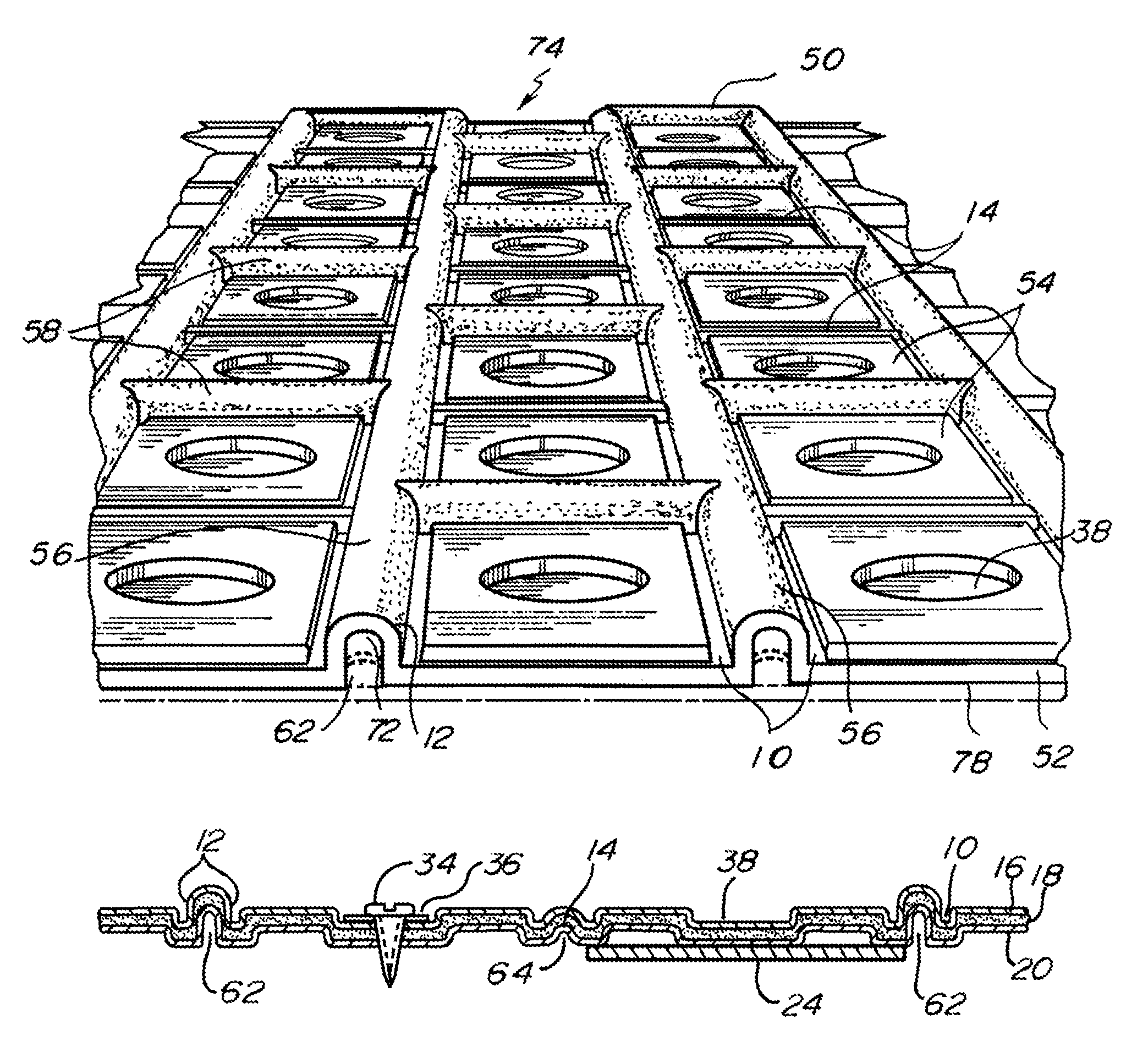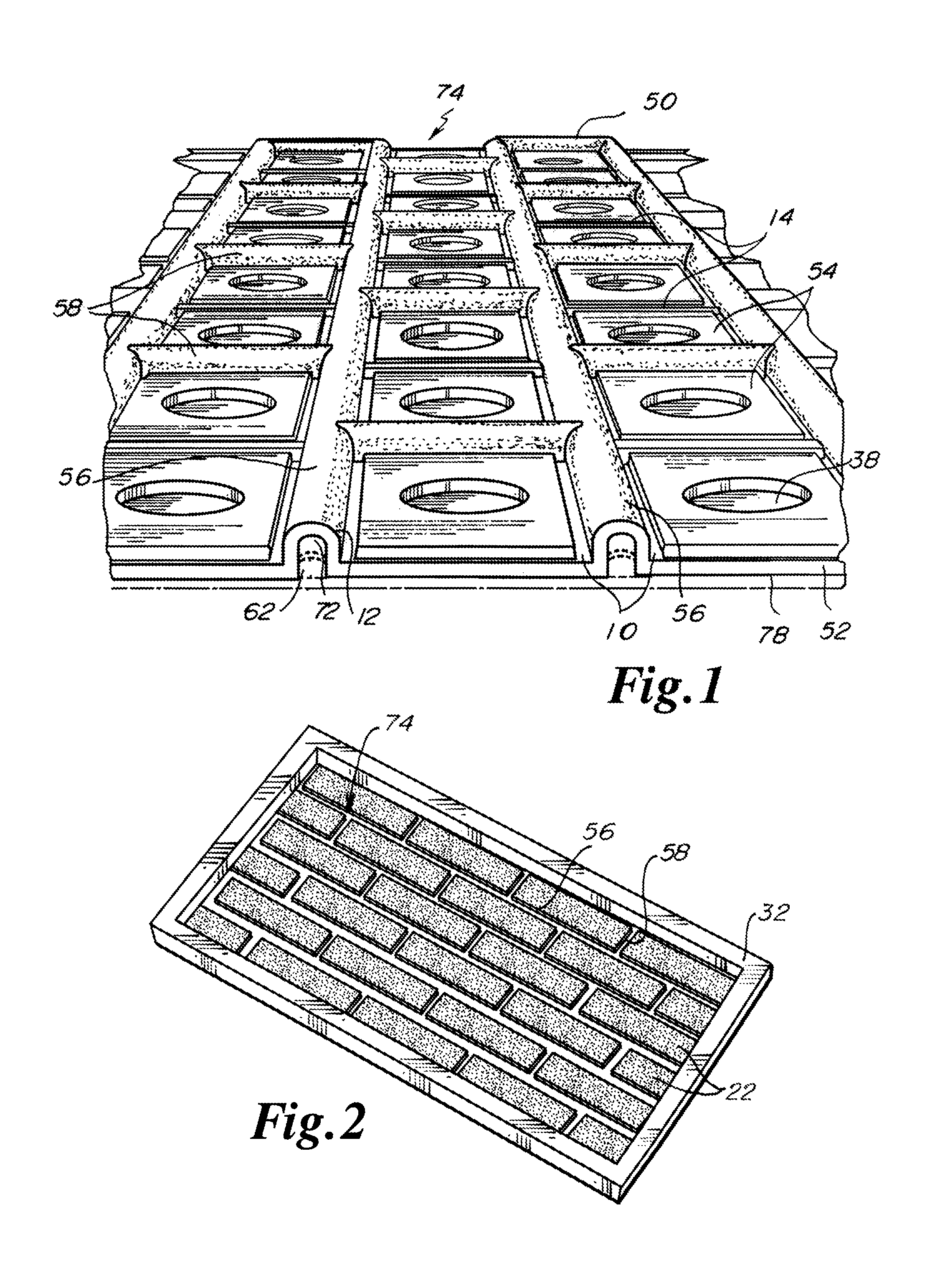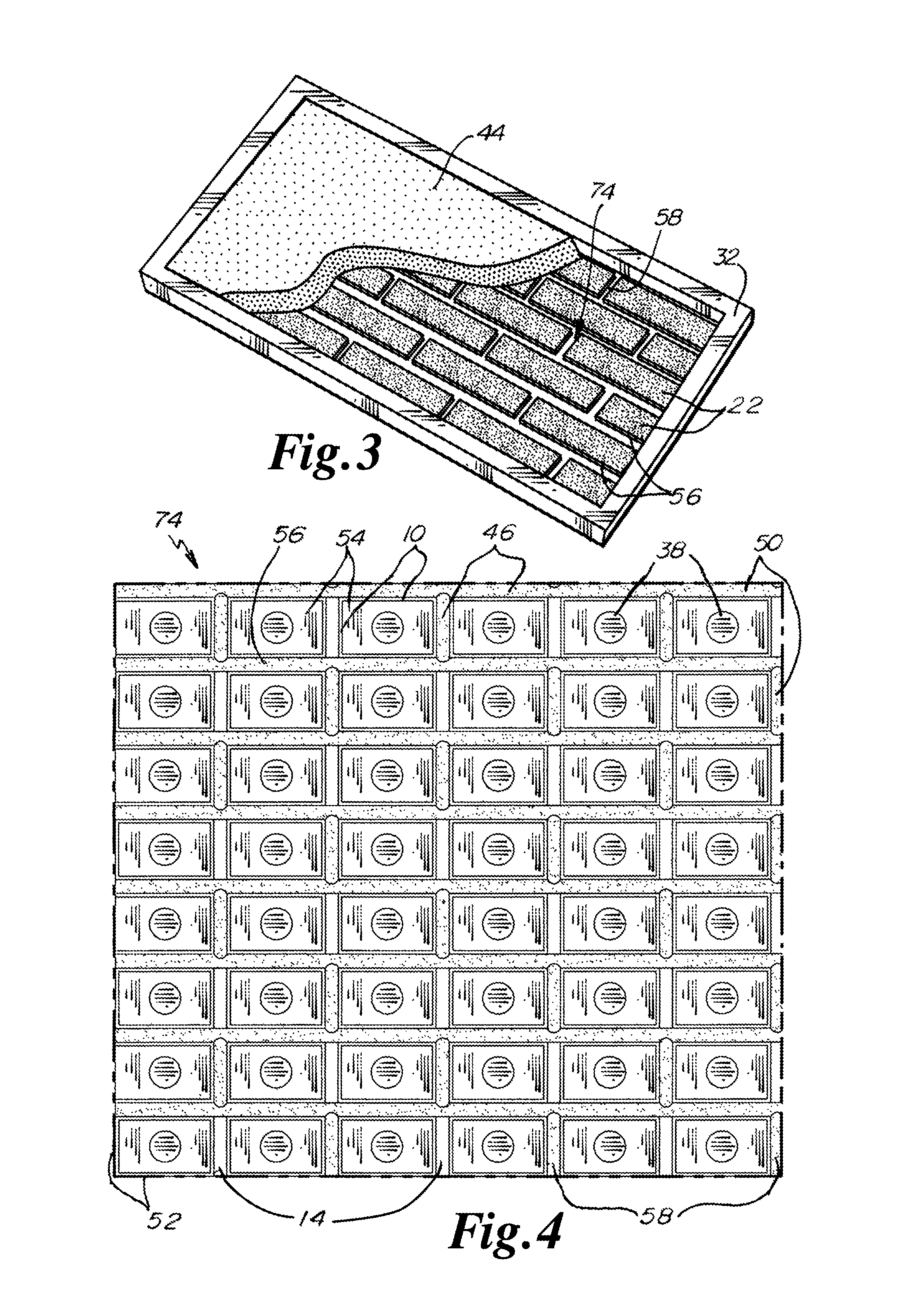Thermoplastic liner for casting textures and objects into poured wall
a technology of textures and objects and thermoplastics, applied in the field of reusable lines, can solve the problems of high cost and labor, fake walls, and high cost and labor costs of liners
- Summary
- Abstract
- Description
- Claims
- Application Information
AI Technical Summary
Benefits of technology
Problems solved by technology
Method used
Image
Examples
Embodiment Construction
[0043]While this invention may be embodied in many different forms, there are described in detail herein specific embodiments of the invention. This description is an exemplification of the principles of the invention and is not intended to limit the invention to the particular embodiments illustrated.
[0044]For the purposes of this disclosure, like reference numerals in the Figures shall refer to like features unless otherwise indicated.
[0045]FIG. 1 illustrates an embodiment of the invention comprising a liner 74 designed to accommodate a set of bricks. The liner 74 of the present invention is used to position the bricks 22 into a desired pattern, for example as shown in FIG. 2. The liner 74 can be placed in a form 32 and a cementous material can be poured into the form so that the cementous material 44 covers all of the brick 22 and the joints 56, 58 of the liner 74 between the brick 22, for example as shown in FIG. 3. When the cementous material 44 cures, the form 32 is removed an...
PUM
| Property | Measurement | Unit |
|---|---|---|
| Elastomeric | aaaaa | aaaaa |
| Flexibility | aaaaa | aaaaa |
| Shape | aaaaa | aaaaa |
Abstract
Description
Claims
Application Information
 Login to View More
Login to View More - R&D
- Intellectual Property
- Life Sciences
- Materials
- Tech Scout
- Unparalleled Data Quality
- Higher Quality Content
- 60% Fewer Hallucinations
Browse by: Latest US Patents, China's latest patents, Technical Efficacy Thesaurus, Application Domain, Technology Topic, Popular Technical Reports.
© 2025 PatSnap. All rights reserved.Legal|Privacy policy|Modern Slavery Act Transparency Statement|Sitemap|About US| Contact US: help@patsnap.com



